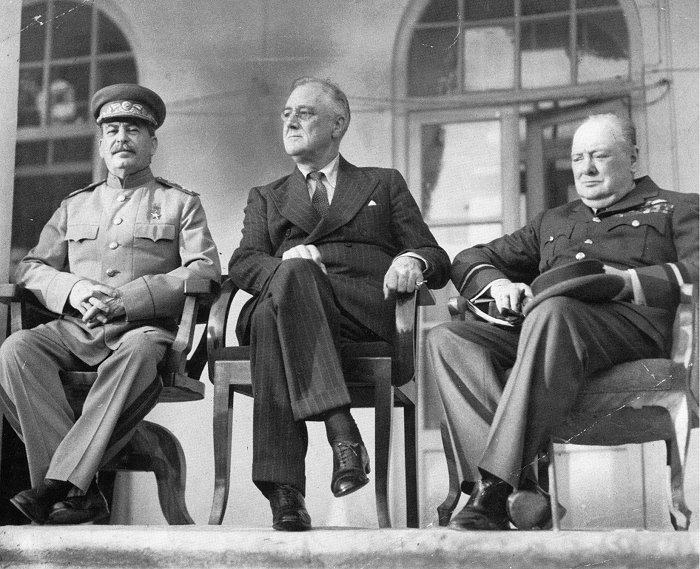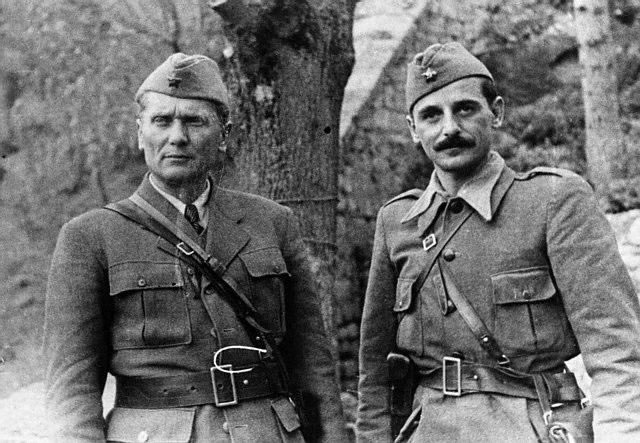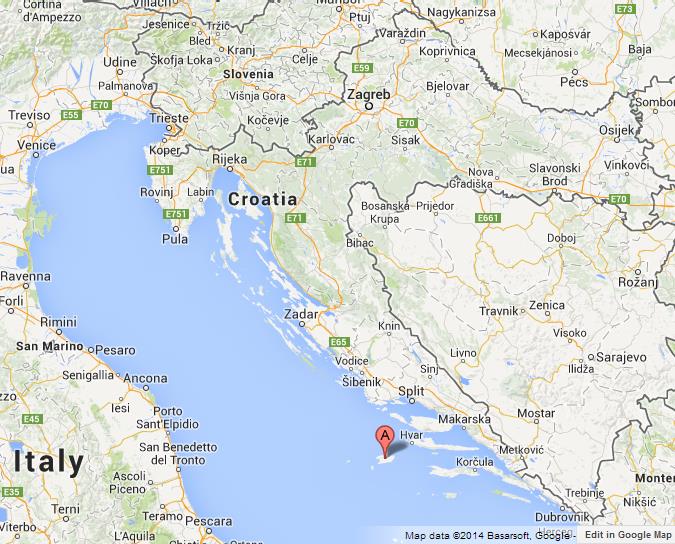At the end of the previous entry, I’d taken the oath as a Pioniri but more importantly taken you through some of the events that shaped the early life of Josip Broz. The onset of the Second World War loomed and he had adopted the moniker Tito. Although he continued consolidating his position within the still outlawed Communist Party, it would be his accomplishments as the leader of the Yugoslav resistance (the Partisans) that fought the Axis that would vault him to becoming the politically powerful strongman who would rule the country for more than three decades.
If you date the beginning of World War II as the German invasion of Poland on 1 September 1939, then fighting in Europe had been going on for a bit more than 19 months when the German army, aided by Italian and Hungarian forces invaded the Kingdom of Yugoslavia on 6 April 1941. Within four days of the invasion, Slavko Kvaternik, who had deep involvement with the Ustaša (Croatian Revolutionary Movement) proclaimed the Independent State of Croatia with himself as First Minister of the Armed Forces and Ante Pavelić as the titular leader. This Nazi puppet regime would be responsible for some of the worst atrocities and mass murders of the war.
The Yugoslav army crumbled just days later and on 17 April, the last Yugoslav king, Peter II (who had ascended to the throne after his father Alexander I was assassinated by an Ustaša hired Bulgarian) fled the country with some of the other members of his government. The few who remained quickly acquiesced to German demands, ceased their resistance, and acceded to the governance of the so-called Independent State of Croatia.
Not so Tito and the communists. Their response was to form a Military Committee within the Central Committee of the Yugoslav Communist Party (KPJ). Within weeks of the surrender, Tito, hearkening back to his early days as a communist activist, issued a pamphlet calling on Yugoslavs to unite in a battle against the occupation and their puppet government. By the end of June 1941, the Central Committee of the KPJ had appointed Tito commander-in-chief of the National Liberation Army (NOV) or, as it came to be commonly called, the Partisans.
Tito managed to broker a fragile agreement with monarchist Chetnik forces in Serbia and with them managed to liberate territory in what became the short-lived Republic of Užice. This was the first liberated territory of the war. It’s also reported that during this time, Tito ordered his forces to assist escaping Jews, and that more than 2,000 Jews fought directly for him. (Tito was an equal opportunity nationalist guerilla fighter who accepted women as well as Jews, Gypsies, and Chetniks.) The cooperation between Tito’s NOV and the Chetniks, who were led by Dragoljub “Draža” Mihailović, lasted about a year before the monarchist Serbian faction eventually broke off – at first surreptitiously and later openly – to cooperate with the Axis powers.
In December 1941, the Partisans created the First Proletarian Brigade commanded by Koča Popović who would later become both Foreign Minister and Vice President under Tito. They are seen together in this 1943 photo. Tito is on the left.
The NOV proved to be the most effective European military force opposing the Axis powers. They continually liberated chunks of territory from the occupying forces and each time they did, the Partisans organized People’s Committees to act as civilian government. By autumn 1942, their resistance was so effective and their confidence so great that they convened the first two meetings of the Anti-Fascist Council for the National Liberation of Yugoslavia (AVNOJ) to establish the basis for the post-war structure of Yugoslavia. They settled on a federation of the Yugoslav nations. (It’s important to remember that AVNOJ established the borders of the various republics and that this served as the basis for international borders when the republics declared their independence in the nineties.)
In these meetings, they set up a nine-member National Committee of Liberation to serve as a de facto government and elected Tito as president. Meanwhile, the Partisans military successes continued and by 1943 were recognized as allies by the United States, Great Britain, and the Soviet Union particularly after extensive German attacks on Tito’s Bosnian headquarters in Drvar led them to conclude that the Chetniks had begun collaborating with the Nazis. At the Tehran Conference that ended on 1 December 1943, these guys 
(Stalin, Roosevelt, and Churchill) reached an agreement to officially recognize the Partisans. They agreed to not only support them with intelligence, supplies, and equipment but also with commando operations. This action effectively opened a new front in the war with Germany.
The NOV was ruthless in its assaults against the German occupiers. It’s estimated that 40 percent of the 200,000 Germans they captured died in captivity. However, they suffered great loss of life themselves. Some estimates say that at its peak, the Partisans numbered over 750,000 fighters and that nearly a third of those were killed in the war effort.
Italy surrendered in September 1943 and the D-Day invasion on 6 June 1944 sent American and British forces moving toward Germany from the west. Soviet forces were, at the same time, both closing in from the east and assisting the Yugoslavs pushing up from the south. Under pressure from this multi-pronged attack, Germany’s defeat looked all but inevitable.
On 16 or 17 June 1944, Tito met with Ivan Šubašić, who was a representative of the exiled royal government, on the island of Vis (A on the map below) which was considered Croatian territory.
There, they signed the Treaty of Vis that attempted to merge the AVNOJ with government of the exiled Peter II. By mid-September, King Peter was calling on all Yugoslavs to unite under Tito’s leadership. The man from Kumrovec was now recognized by both the king and by the allied forces not only as the commander-in-chief of the military but as the Prime Minister of Yugoslavia. Within weeks of Germany’s unconditional surrender on 8 May 1945, the NOV withdrew its request for the cooperation of Soviet forces and no foreign fighters remained in Yugoslavia.
The Treaty of Vis included the specification that Yugoslavia would be transformed into a democratic and federal country after the end of the war. The provisional state was called Democratic Federal Yugoslavia. Britain thought the agreement ensured the transition to a democratic post-war Yugoslavia and granted full recognition to Tito’s provisional government.
The results of the elections held in the fall of 1945 established a legitimate government and made the terms of the Treaty of Vis obsolete. Tito’s People’s Front led by the Communist party won an overwhelming victory bolstered, at least in part, by the fact that the monarchists had boycotted the election. All the officials appointed by the king, including Šubašić resigned in October and on 29 November 1945 the new country of the Federal People’s Republic of Yugoslavia was born.
Note: In keeping with my 2022-2023 reformation of the blog into shorter entries, backdated to maintain their sequence, any comments on this post might pertain to its new configuration. See the explanation in the post Conventions and Conversions.


another amazing report
I’m so happy to know you’re reading regularly.
Thank you, nice read.
Nice report with one huge mistake. Chetniks of Draza Mihailovic didn’t cooperate with Axis, that was another Chetnik movement under control of Kosta Pecanac. Mihailovic and his fighters cooperated with US army mainly, less with Brits. https://en.wikipedia.org/wiki/Operation_Halyard
Thank you for the correction.